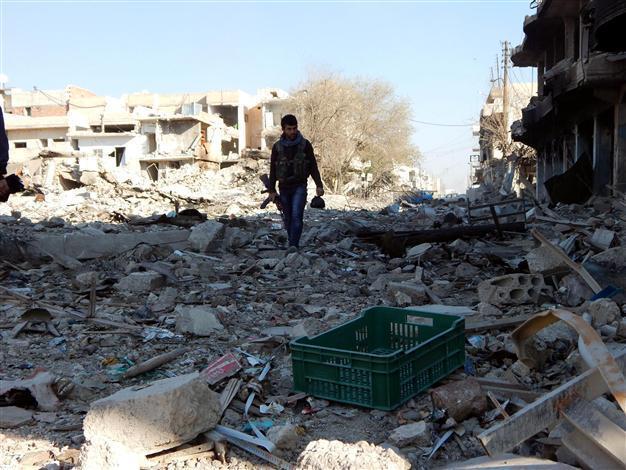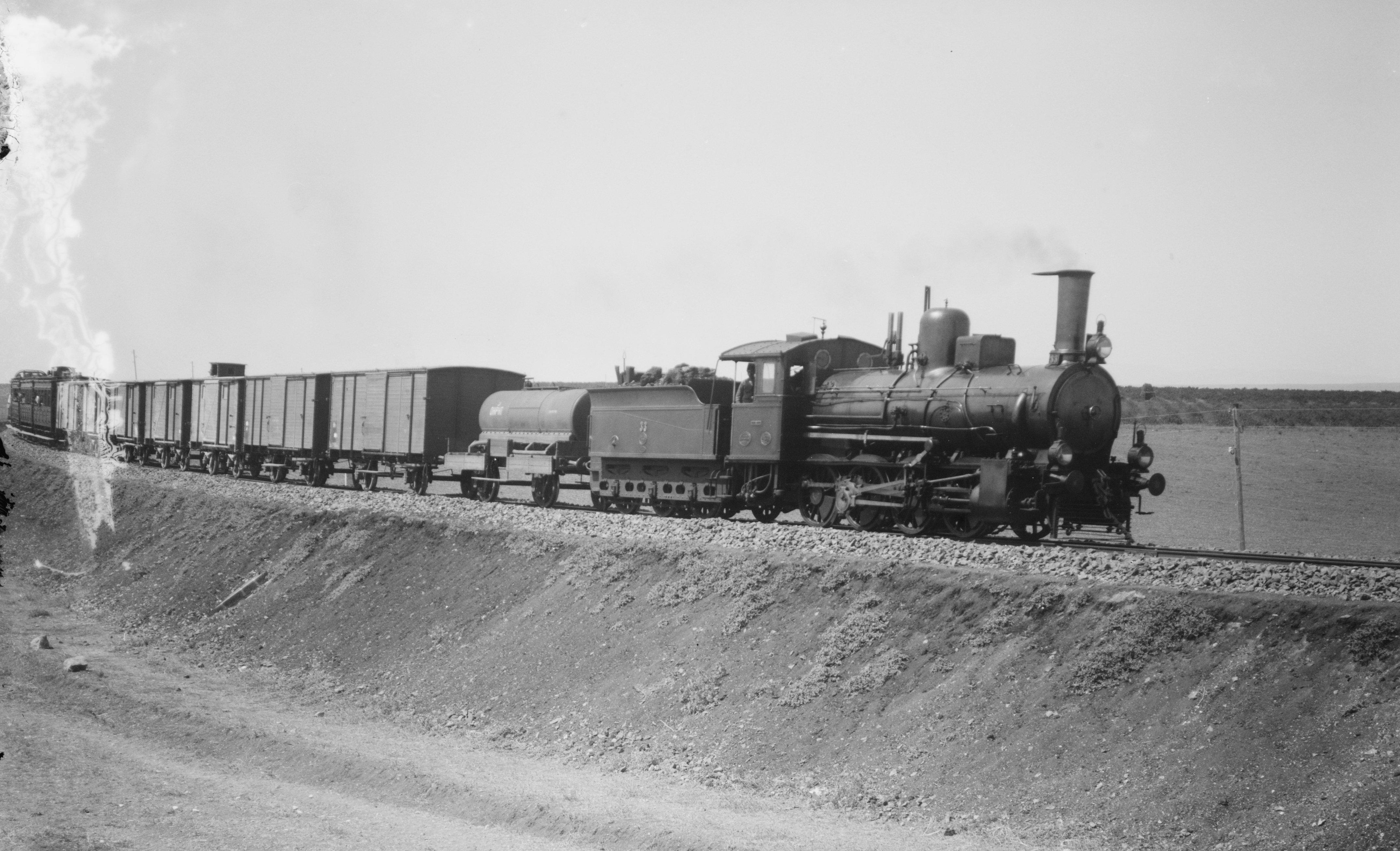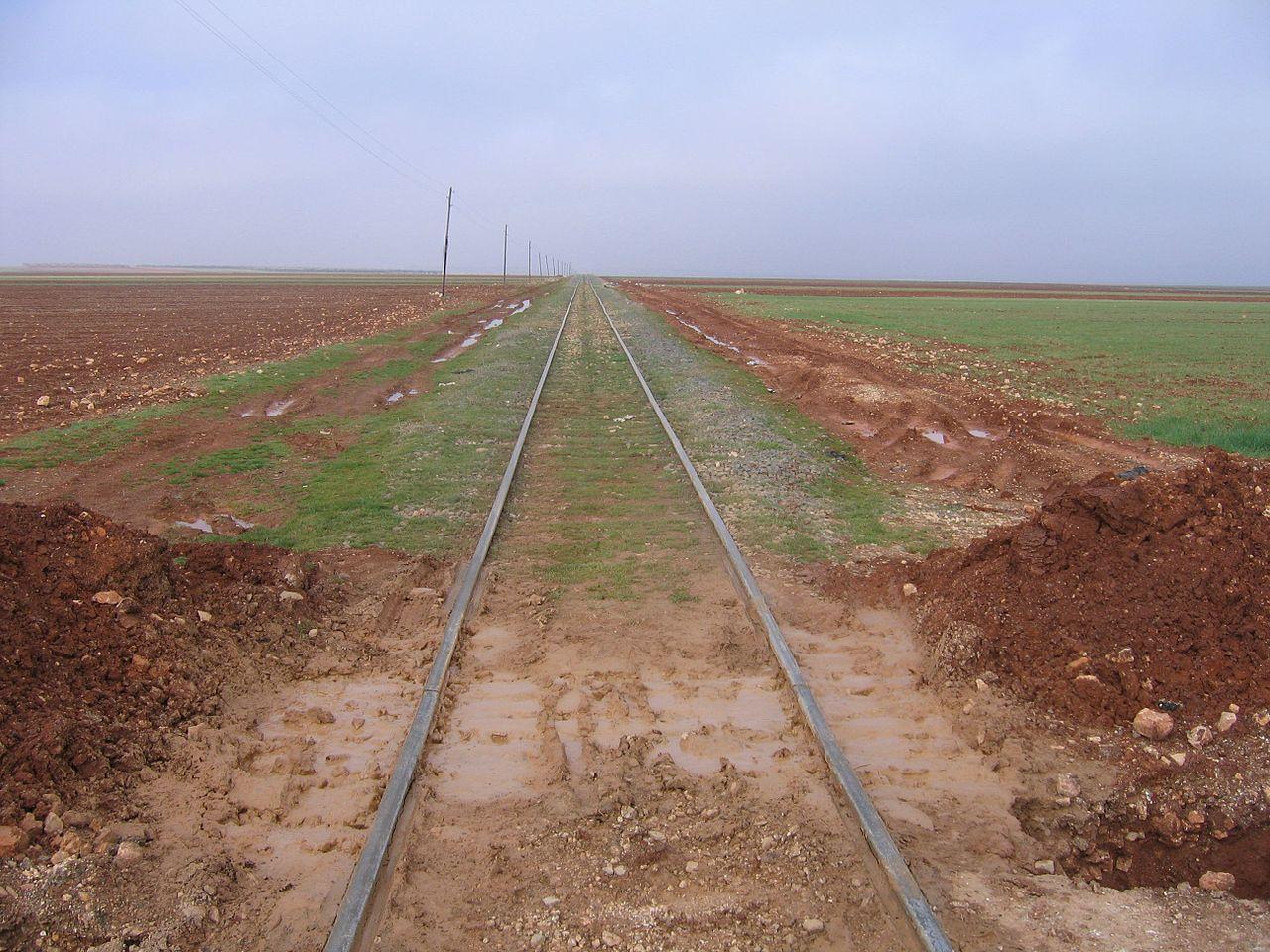Explained: Kobane or Ayn al-Arab?
ISTANBUL

The town is now largely ruined by the ongoing street battles. This photo was taken by Hürriyet reporter Faruk Balıkçı on Oct. 27, 2014.
Kobane, a dusty town on Syria’s border with Turkey, has been a battleground between the defending Syrian Kurdish forces and the besieging militants of the Islamic State of Iraq and the Levant (ISIL) for weeks. As the fighting continues to rage, the etymology of the town’s name is now also being contested.“I don’t want to get involved in the debate about whether this town belongs to the Arabs or the Kurds. But as a matter of fact, as befits the name, it is called Ayn al-Arab [“Arab Spring” in Arabic]. This name was then turned into Kobane,” Turkish President Recep Tayyip Erdoğan told a group of journalists on his way back to Ankara from Estonia on Oct. 25.
But where does “Kobane” come from?
View ICTCS - old in a larger map
Nobody disputes that the town is a relatively new settlement. Before the 20th century, it was just a water meadow where even great commanders like Saladin used to feed the horses of his army. For a long time, it was referred to as Arab Punarı (“Arab Spring” in Turkish).
Muhsin Kızılkaya, a writer of Kurdish origin, told private Turkish broadcaster CNN Türk on Oct. 13 that Kobane was not even a small village at the turn of the century. “The Germans set a small station there while building the Baghdad Railway. A new settlement was developed around the construction and locals called it Kobane, in reference to the German ‘company’ that built a road in the area,” he said.

The Baghdad Railway circa 1900-10. This public-domain photograph is from the G. Eric and Edith Matson Photograph Collection at the Library of Congress.
Historically, however, the “company theory” sounds weak, as Germans use the word “Gesellschaft” for business companies. “Kompanie,” on the other hand, refers to military units.
Others have suggested that the middle part of the name Kobane could come from the German word “bahn” (road). In fact, Anatolische Eisenbahn, a German company, built the landmark Baghdad Railway, which some historians see as one of the causes of the First World War.
After connecting Istanbul to Konya via Ankara in the 1890s, Anatolische Eisenbahn started to build the second phase of the railroad that would link Konya to Aleppo. “German engineers built a small station in the area. This was the first time that Arab Punarı was put on the map, in 1912,” daily Milliyet columnist Aslı Aydıntaşbaş wrote on Oct. 13.

At the time, Arab Punarı was a remote railroad station with a few shacks around, while nearby Urfa was a sprawling multicultural city of Turks, Kurds, Arabs and Armenians. Suruç, a district of Urfa, was the closest settlement to Arab Punarı with a significant population, lying just across the railroad.
“Actually, Arab Punarı first appeared on the stage of history during the Armenian massacres in 1915,” Aydıntaşbaş also added.
Soon after Turkey entered the First World War as an ally of Germany, it decided for the mass deportation of Ottoman Armenians, who it accused of revolting and aiding the enemy on the eastern front, the Russians. Arab Punarı became one of the “transit centers” for the Ottoman Armenians deported from the Eastern Anatolian town of Sivas to the remote deserts of Syria.
In his two-volume book, “The Armenian Genocide” French-Armenian historian Raymon Kevorkian writes that 120-170 people were dying due to illness each day in late 1915 at the Arab Punarı camp, where some 15,000 Ottoman Armenians had been placed.
Germany and the Ottoman Empire ultimately lost the war before a new border was drawn between Turkey and Syria based on the Sykes-Picot Agreement that Britain and France had secretly signed in 1916. The German-made railroad was determined as the mark for the border by the victors of the war. Hence, Suruç was left to Turkey while Arab Punarı was now on the Syrian side of the border.

MPK1-426 Sykes Picot Agreement Map signed on May 8, 1916
The new, independent Turkey has complained of armed groups crossing the border near Arab Punarı since the 1920s. After a Kurdish uprising was quelled by Ankara in 1925, several tribes crossed the border in the opposite direction, from Turkey to Syria, thus increasing the Kurdish population in Arab Punarı. The town became melting pot of Arabs, Kurds, Armenians and Turkmens, and many of its districts and surrounding villages still bear Turkish names.
Right up to the independence of Syria, a French intelligence headquarters was maintained in Arab Punarı by the land’s colonial authorities, according to Aydıntaşbaş. French agents were based there to control the porous border, upon Turkey’s insistent requests to stop smugglers and armed groups.
“When the modern state of Syria was founded, the regime renamed the town Ayn al-Arab, in line with its ‘Arabization’ policy,” Aydıntaşbaş added. The demography of the area was slowly altered once again.

The Baghdad Railway passes varied landscapes including the plains north of Aleppo, Syria (above). Photo taken in February 2007 by Reinhard Dietrich, released under the terms of the GNU Free Documentation License.
Today, most Kurds refer to the town as Kobane, while Arabs prefer to stick to Ayn-al Arab. The Turkish authorities oscillate between both names, weary of the political war of words that goes hand in hand with the ongoing street battles in the town.
Meanwhile, almost everyone has forgotten the true origins of the name referring to Arabs in Turkish, as well as the town’s history, which is full of tragedies for many people, including Armenians and Kurds.
















